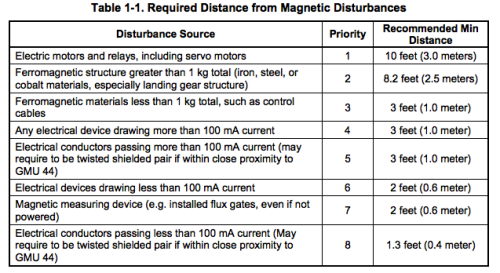I’ve found online a copy of the installation manual for the Garmin G1000 glass panel cockpit display system, which is written for builders of experimental aircraft who are installing the G1000 system. I’m interested in how they say the magnetometer subsystem should be installed, and whether it needs to be flight calibrated.
The GMU44 is the magnetometer unit and Garmin specify (table 1-1) minimum distances from sources of magnetic interference.
They forbid installation within 2.5 metres of the engine structure of the aircraft, which is the largest piece of ferromagnetic material. But they also have limits for distance to the landing gear (spring steel, often) and electrical conductors.
There’s also a GMU 44 Location Survey Tool Software which uses a runtime version of another mathematical tool suite – Matlab – that you have to use, which measures the magnetic changes from a whole long list of operations (nothing done in flight though, as far as I can see.)
Interesting reading. One of the things I am coming to see is that the idea of having a portable device you can fly with that will give you an accurate magnetic heading is infeasible. Anything portable isn’t going to be accurate; and for accuracy you need to tie your sensors to a fixed location and them calibrate them in place – or at least be absolutely certain that there are no magnetic interferences in that location.

